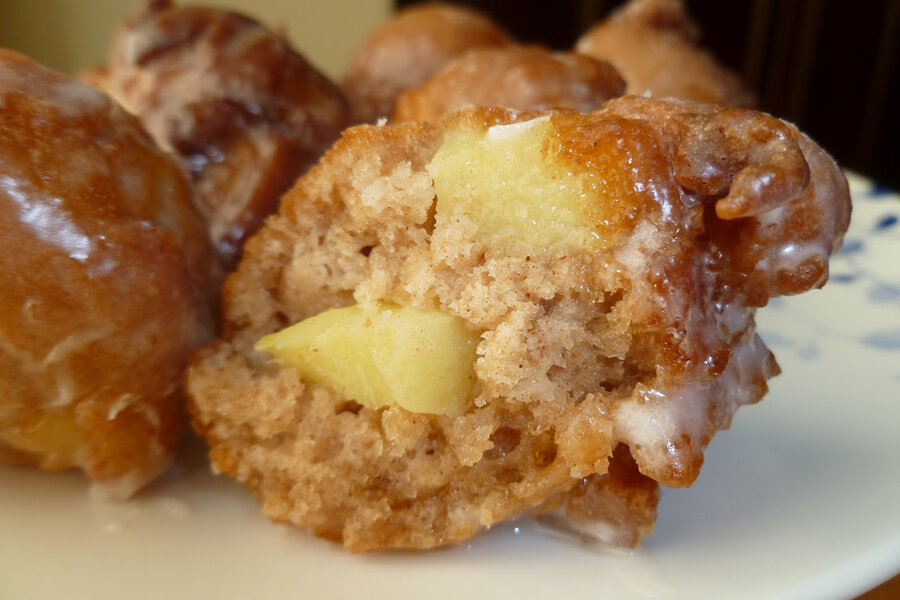By Carol Ramos, The Pastry Chef's Baking
From Seemingly Greek
1 generous cup all-purpose flour
1/3 cup sugar
1 teaspoon baking powder
dash of salt
1 to 2 teaspoons cinnamon (depending on how much you love cinnamon, I used 1-1/2 teaspoons)
1/4 teaspoon nutmeg
1/2 teaspoon vanilla
1 tablespoon butter, melted
1 egg
1/3 cup milk, plus more if needed
1 to 1-1/2 cups chopped apple, your favorite kind for eating, cut to peanut-sized or smaller
oil for frying
milk and powdered sugar glaze for dipping or just powdered sugar for dusting
(About 1 cup powdered sugar + 1 tablespoon milk or more)
1. Heat oil in a pan with high enough sides to immerse the fritters in oil.
2. Mix all dry ingredients together then slowly add the wet ingredients minus the apple.
3. Carefully mix until well combined but do not over mix. Gently fold in apple pieces. The batter should be the consistency of a light cake mix.
4. Once the oil is ready (when a test drop of dough floats to the top of the oil, a drop of water sizzles, or a piece of white bread browns in 60 seconds) then using a cookie scooper or soup spoon, place four or five balls of dough into the oil. Be careful not to overcrowd and watch carefully for the underside to turn golden brown, then gently flip over and continue frying until done.
Adjust cooking times based on size of fritters and temperature of your oil, ideally around 365 degrees F. It is always a good idea to test one to ensure it comes out like you are expecting.
Read the full post on Stir It Up!








